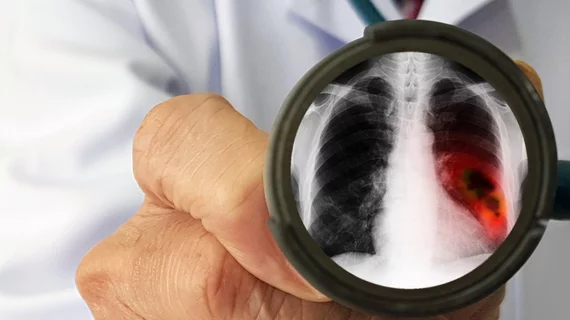Providers ordering diagnostic rather than screening CT may push patients out of LCS programs
Patients who undergo a diagnostic chest computed tomography exam after completing a screening CT are more at risk of dropping out of lung cancer screening programs compared to others.
That’s according to a study of nearly 6,000 individuals who participated in Brigham and Women’s Hospital’s lung cancer screening program, published Nov. 6 in JACR. A higher Lung-RADS score proved to be a risk factor for receiving a follow-up diagnostic chest CT, which is also an independent risk factor for losing program participants.
Patients undergoing diagnostic, rather than screening CT, may suffer several potentially damaging effects, the authors noted, including higher radiation dosages and differing follow-up recommendations.
Given successful LCS programs require a strong multidisciplinary team effort, radiologists and other providers must be aware of these potential pitfalls, the Brigham doctors noted.
“It is critical to educate referring clinicians on this issue and to remind them of the potential differences in radiation dose, timing of follow-up, and cost that exist between diagnostic and LCS CT,” Suzanne C. Byrne, MD, with the Boston health giant’s Department of Radiology, and co-authors added.
The findings are based on 5,912 patients who received lung cancer screening CTs and 2,756 who underwent a follow-up diagnostic or screening exam between June 2011 and August 2018.
Those with a higher Lung-RADS score were more likely to undergo subsequent diagnostic CT, the group found. Most of these scans were ordered one year after nodules were found, suggesting clinicians likely meant to order screening CT rather than diagnostic exams, Byrne et al. explained.
Additionally, among the 711 people sent for follow-up screening CT, 584 (82%) stayed with the LCS program. On the flip side, 208 (39%) of those who received a diagnostic exam continued with the program.
Byrne and co-authors suggest radiologists include the specific name of the exam in LCS CT reports (i.e., low-dose lung cancer screening CT) in order to retain patients.
“Finally, it is imperative that a program have a very skilled navigator who closely monitors the program’s patients to ensure that they are undergoing the appropriate follow-up imaging and reaches out to clinicians when potential improper orders have been placed,” the authors added.
Read more in the Journal of the American College of Radiology.

